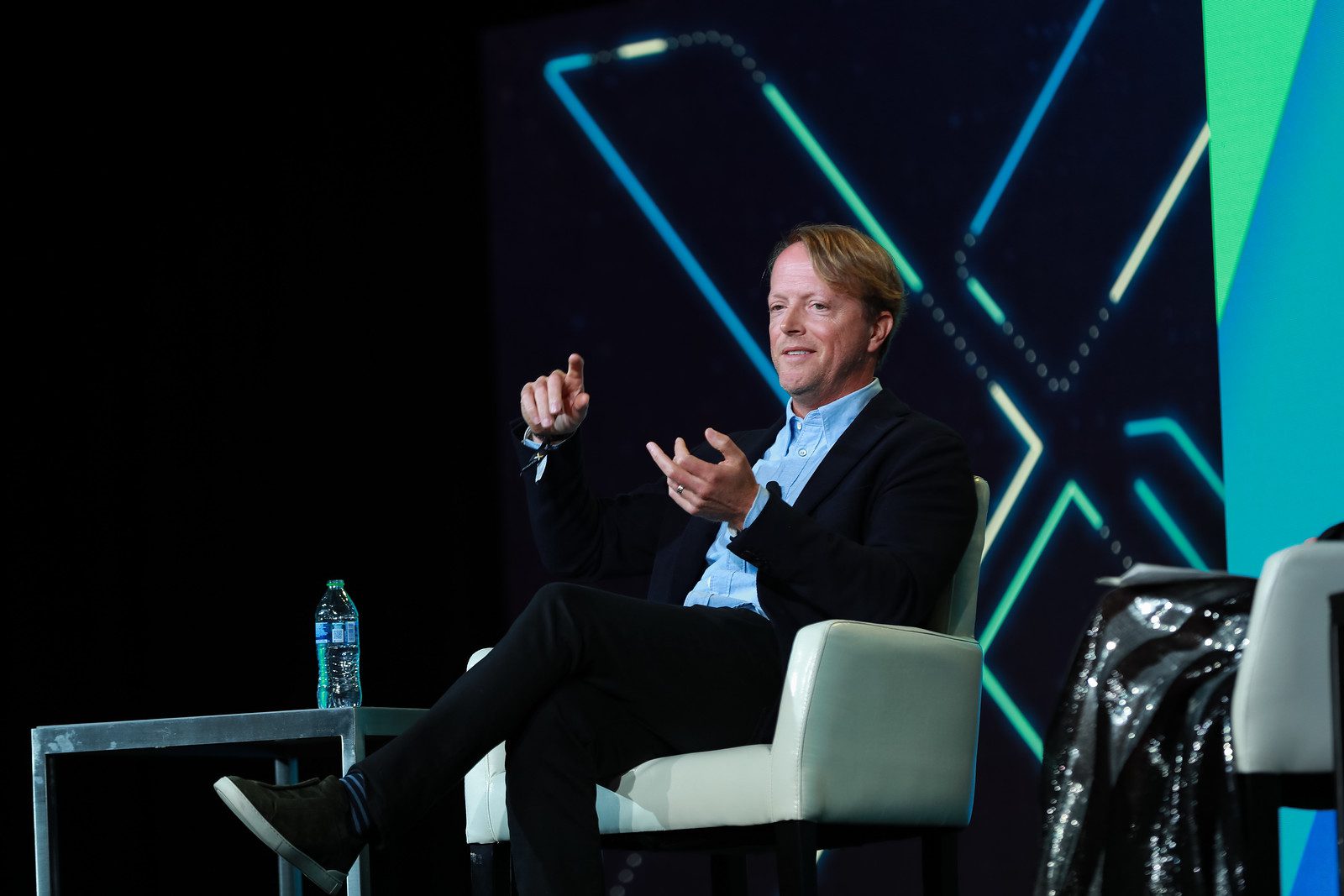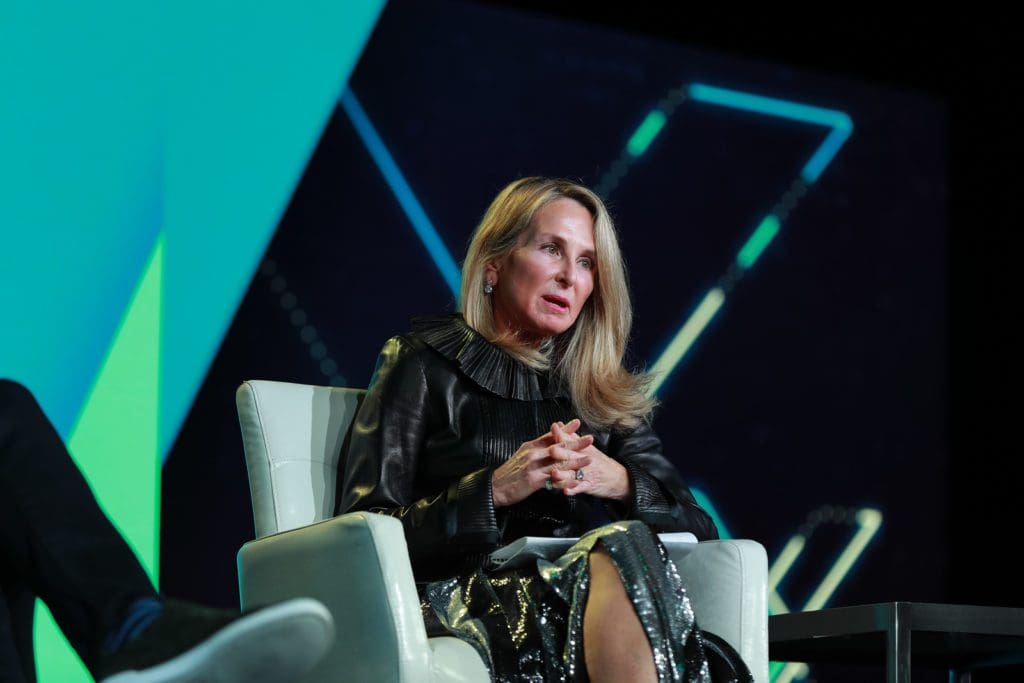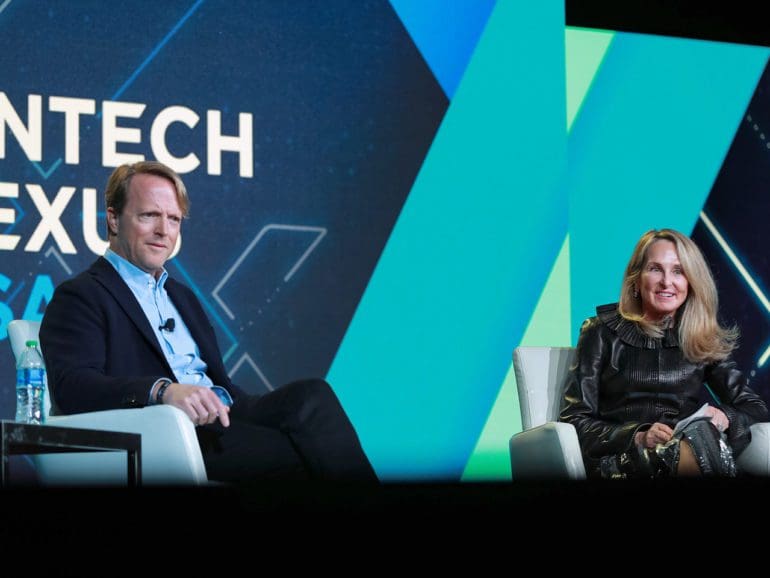When Scott Sanborn signed up, the keynote topic exercised his expertise: how did LendingClub build a digital marketplace bank. Then, things changed.
As the year of tech stock price reverb, the topic shifted with the icy edge of clarity: Why does it pay to balance the agility of a fintech and the reliance of a bank?
A Nexus fan favorite and winner of the 2021 Fintech Industry Executive of the year, CEO of LendingClub Scott Sanborn, sat down with Moderator, CEO of PYMNTS.com Karen Webster to find out.
“Scott, we have a lot to talk about but not a lot of time to do it,” Webster said.
“Let’s Do it!” Scott said.
Verified volatility
Webster jumped right into it: the “macro environment” is challenging, with inflation higher than the 40-year watermark with rising inflation; she asked, how would Scott define the state of the consumer in ’22?
“I first want to get into the state of the U.S. consumer,” she said. “I want to put that in a little context because I’m sure it implies what requirements there are on banks that adapt to consumers’ constraints.”
Sanborn said things are still pretty strong, considering the longer arc of 20 years. The recent volatility does not shake up the relatively healthy consumer debt levels facing housing, healthcare, education, and other expenses.

“You’re seeing that government support has subsided, and cost of living has been going up and outpacing wages (which have thankfully started to move,)” Sanborn said. “You are certainly seeing that, especially in more vulnerable parts of the population, kind of back to where they were pre-pandemic, already.”
When paycheck to paycheck means upper class
Webster pointed out it has become evident that a new subset of consumers is struggling: about half of paycheck-to-paycheck consumers make $100,000 a year or more, adding to two-thirds of the U.S. adult population that still waits for payday.
Sanborn said today that higher income does not mean escaping debt but higher debt balances.

“If you look at our customer, people are often surprised our average customer is earning over $100,000 a year; their average FICO score is north of 700,” he said. “People say, wow, why would that consumer have credit card debt? It’s going back to these trends over time, which is a lot of expenses going up: The more money you’re making up until you reach a certain point of wealth, the more debt you have. So higher income means higher credit card balances.”
Everyone thought this reality would continue to escape consumers, especially in 2022, Webster said, as Sanborn joked that yes, after the pandemic, ’22 was supposed to be a “gogo year.” Instead, with long-overdue rate hikes, credit card balances, and, unfortunately, tech stocks returning to the norm.
Downturn means reckoning the roadmap
LendingClub’s resilience is the original founding presence: offering the average American consumer products that help them improve their financial standing. Sanborn said they built the firm on going to consumers to help them pay off their credit card balances. About half of Americans carry credit card balances, and to them, it is “effectively a loan, and a crappy loan.”
“Our primary use case we built the business around was going to consumers who have credit card debt, and saying ‘hey, do this instead, we’ll lower your costs pretty significantly, by about 400 basis points,” Sanborn said. For us, the growth of credit card balances is a tailwind for our business because it means there are more people we can help.”
He added that higher credit balances encouraged LendingClub to raise its yearly guidance.
Where the bank acquisition comes in
While LC historically focuses on lending to repair credit, Webster asked how LendingClub would also handle new trends in financial health outside of recognition. Three words: they bought a bank.
“We’ve learned 25% of consumers in the U.S. want a better handle on their financial health,” She said. “How does the digital marketplace bank fulfill the needs of what 25% of the U.S. population says they want?”
Sanborn said that their history is in lending and improving financial health, but through the bank acquisition, they can move to general financial health, vertically integrated, and nearly automated accounting and record-keeping
“With the bank’s acquisition, we now can move and help people manage their spending and their savings,” Sanborn said. “What we’re hearing loud and clear from customers: it would be great if somebody could make it easy for us to make smart financial decisions.”
Sanborn described a financial secretary in a consumer’s pocket.
“These consumers have their own systems to manage all the bills coming in. But they want somebody that could take a look and say, ‘you get paid on the first, but your mortgage is due on the 28th; maybe you should change that payment date to be after your payroll date,” He said. “So we’re hearing that from our customer, that’s the work we’re to try and just make it very easy to make good financial decisions, and leverage what we’ve got.”
But how is that different from other neo banks that have gone digital aim to achieve?
“The big difference for us, as we’re most of those inroads have been made is in the underbanked consumer, who was being kind of fee-ed to death by the core banks,” he said. “They created an experience to help people access their wages early, avoid overdraft fees: That’s not our customer; our customer is served by the banks just very poorly.”
Sanborn said that existing banking customers in the US tend to pay less on their deposits but more for their loans than brand new customers. LendingClub aims to grab these consumers and give them a better way.
What will it look like with erosion and construction?
Sanborn said there had been a ton of positive consumer innovation, not just in digital banks. Overdraft fees are lowering experiences, and service is seamless. What he sees now, after the accelerated change of the digital pandemic, is that the space is flourishing with new creators taking the helms of intriguing commutes of financial services.
“The pandemic has really accelerated this move to digital, and people realize they used to choose their banks based on the branch location. Banks are not a place you go, it’s a thing you do, and it’s increasingly on your phone.”
He said the fintech banking space reminds him of the early days of the internet, with the proliferation of dating sites. Bank communities can serve diverse groups with their own unique needs without the infrastructure overhead banks of the past had to carry around.
“You’re starting to see that in banking, right bank banks, specifically for freelancers, small businesses, banks, teenagers, and each coming with a unique value proposition,” he said. “These new banks are starting with a clean sheet of paper. However, the question is ‘what’s the business model?'”
The new challenge faced by even JPMorgan Chase is how to turn a great user experience into a business. Webster pointed to a PYMENTS article that quoted JPMC as saying they expect to pick up a billion in losses in digital banking before eventually turning a profit in 2026.
“You know, Jamie has not called me yet for advice. Look, I think it’s fascinating, you heard him talk pretty openly about the need to invest in technology, and JP Morgan Chase can afford that,” he said. “But what happens to the smaller ones, these community banks, regional banks, and their ability to keep pace.”
He said that product and brand differentiation is the game for smaller banks, and serving niche communities is the way to go.
They are not customers, they are ‘members’
Webster focused on the difference between what LendingClub has focused on, that digital bank customers are not the same as LendingClub members.
So as I mentioned, they are high income, you’re talking over $100,000, a high Fico, and very creditworthy,” he said, “And these are not Millennials. Our average customer’s between 40 and 50, which is the age at which you’ve built up a credit history, and unfortunately, you’ve also built up some debt. So that’s who we are reaching. We’ve got about 4 million members that fit that profile.”
That’s the sticking point in the ’22 LendingClub pitch: Sanborn said it is not a place to keep your money; it is a place that will “actually give you money.” The focus is on the initial, cash-in-your-pocket savings that bring customers back for an expanding ecosystem of products.
“Our first interaction is” Welcome to LendingClub, take two minutes, we’re going to save you money,” He said. “It’s very positive, and we’re gonna give you money.”


